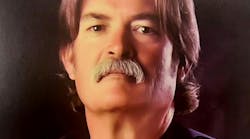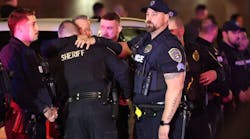Oakland authorities are trying to resuscitate and expand a long-standing antiviolence program that officials agree has been too low a priority for the city's Police Department.
Starting in September, police will assign nine officers solely to Operation Ceasefire, a controversial 6-year-old initiative where police and community leaders use a carrot-and-stick approach to stop shootings and killings in Oakland, city officials said.
Before then, officers assigned to the program would have a variety of other duties, including monitoring gangs in the city, police said.
The struggle to fully apply Operation Ceasefire in East Oakland underscores the difficulty of combatting violent crime with a depleted police force. It is also a product of a city that holds starkly different opinions about whether crime is a personal choice or the result of poverty, racism and urban neglect.
"When Ceasefire is actually working well and is actually being carried out on all cylinders, it has been shown to decrease shootings by about 60 percent," said the Rev. Billy Dixon, co-chair of the program's community working group. "It takes about a year's worth of community walking and talking and call-ins, where the community and the police come together and we tell them that they have to stop shooting."
Police commanders, city officials and community advocates agree that Oakland's program has not yet begun firing on all cylinders. A civilian coordinator has not been hired and the understaffed Police Department has been distracted by a variety of protests while dealing with a changing command staff.
"One of the biggest issues was not enough police resources to bring swift justice," said Sgt. Holly Joshi, who is interim Police Chief Sean Whent's chief of staff. "It hasn't been as fast and robust as it needs to be to make the program work."
Identifying perpetrators
The idea of the Ceasefire model is to link community leaders and service providers with police to help identify those responsible for street violence. The suspected perpetrators are then brought before a phalanx of police officers, prosecutors and community leaders to impress upon them how important it is to end the violence.
The targeted individuals would typically be offered jobs and support from service providers and a vow from police that they will be hauled off to jail if the violence continues.
"They know, 'If I do something, I know they will have me on their radar,' " Dixon said. "It gives them the chance to say, 'I am hot right now. I am going to back away.' "
The program was first started in 2007, but it never truly got off the ground until October when officials brought in for the rap sessions nearly two dozen members of the Case gang, and their rivals, the Money Team.
"We didn't have any shootings for a week, and then two weeks later the violence started picking up," said Reygan Harmon, public safety adviser for Mayor Jean Quan and the interim Ceasefire project manager.
In theory, police are supposed to respond quickly to the uptick in violence, but the department wasn't able to assemble the resources to target members of the two gangs until March. That's when they raided 24 homes and arrested 18 people identified as central players in the bloodshed.
"You have to be swift -- you can't wait until two, three months later," Harmon said.
The city organized another call-in later in March and has met one-on-one with others since then, Harmon said. But the program -- and the department -- were thrown into turmoil when Chief Howard Jordan resigned in May.
"We lost our chief; we lost our entire command staff," Harmon said. "This summer has been a process of having to rebuild it because we lost everybody at the top."
The new nine-person Ceasefire police team will begin in September, about the time a full-time civilian Ceasefire coordinator is expected to be hired, Harmon said. "If it works the way it should, it should reduce the gun violence and the homicides attributable to gun violence," said John Creighton, a deputy district attorney and a member of the operation.
Strategy draws critics
But the Ceasefire strategy has its detractors.
"I think they should stop Ceasefire and hand out 10,000 jobs," said Yolanda Huang, a Berkeley attorney who is often critical of the Oakland police. "These boys go down to (the call-ins) and they want a job and they don't get a job. What they get is a sheet with phone numbers and they're told to make calls, and that's not helpful."
Huang said the Ceasefire interventions are used more to intimidate and threaten than to build relationships.
"There's this chasm between police and the community," Huang said. "What we've been saying is, if you want to keep hammering people, that's the tactic you've adopted for the last 40 years and then people stopped talking to you."
The question, she said, is whether Ceasefire is helping resolve tension "or is it just another form of hammer?"
Copyright 2013 - San Francisco Chronicle
McClatchy-Tribune News Service


